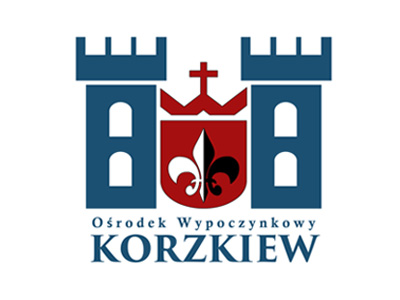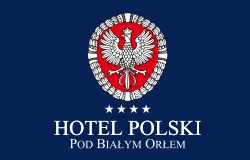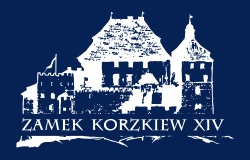Attractions

vineyards in the area
Enjoy tastings organised all year round – at the vineyard or the castle
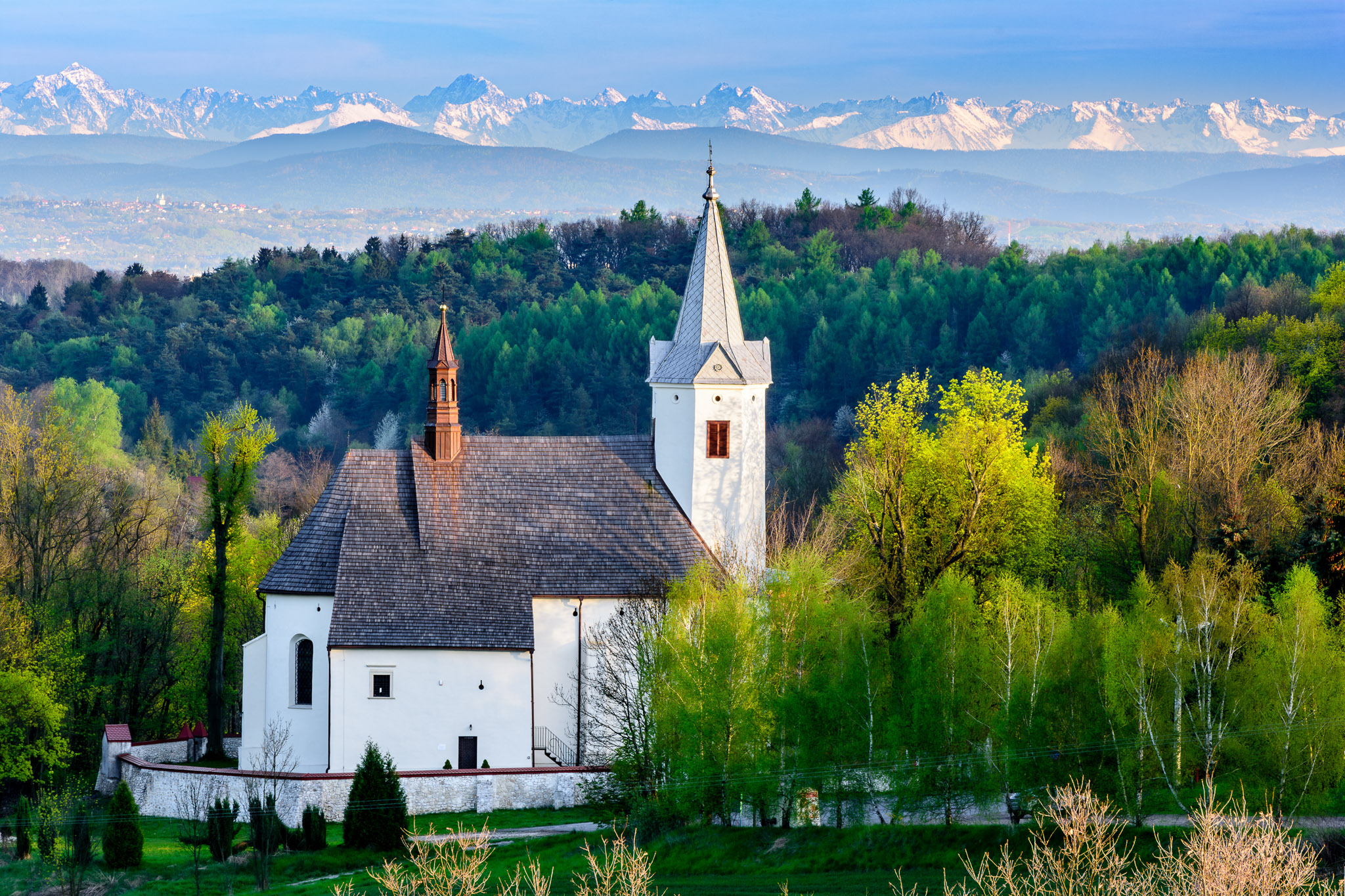
17th century Church of the Nativity of St. John the Baptist in Korzkiew
The church was founded by Aleksander Ługowski, Lubicz coat of arms, the then owner of Korzkiew. The construction took ten years and was completed in 1630. The new masonry church was located nearby, but most probably just above the earlier wooden church. In 1858, it was renovated after a fire on the roof and tower. Mannerist in style, it is an oriented stone building featuring buttresses. It has one nave and a presbytery with a semi-circular apse. Its façade has a tower octagonal in its top section. Its defensive character is confirmed by 24 embrasures in the attic.
Interesting historic artifacts:
- collator family matroneum above the sacristy;
- late-Baroque side altar decorated with a richly carved wooden frame around the image of St. Joseph and patron saints in medallions warding off disease;
- Ecce Homo image from the beginning of the 17th century;
- two female reliquary herms from the 16th century;
- tower monstrance from 1640;
- pax from the first half of the 17th century;
- Gothic reliquary with a crystal can.

Botoja
Here at Botoja, everyone is welcome: both beginners and advanced riders, and also children who wish to give it a try.
Every fan of horse riding will find Botoja to be a professional and modern stud farm with a long tradition and an atmosphere favourable to pursue their hobby.
- Gentle and peaceful horses ideal for learning to ride.
- Modern covered manège.
- Paddocks located in forest surroundings.
- Qualified and experienced instructors.
- Café.

Krakow Valley Golf in Paczółtowice – golf course and shooting range
The Kraków Valley golf course was designed by one of the well-known golf architects, Ronald Fream from California, and was built in accordance with USGA standards. The total distance of the professional tee field is 6,518 m. Diversified topography, wide rolling fairways and massive bunkers – all these most characteristic elements were designed to blend into the Jurassic landscape.
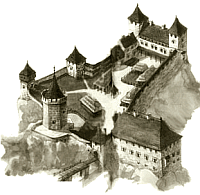
Ojców
First mentions of the village, which developed from a settlement by the castle, come from 1370. Starting in the 19th century, the character of the locality gradually changed from a summer resort to a spa. It had functioned as a health resort since 1855, but numerous skirmishes during the January Uprising brought major destruction only a few years later. The renovation that followed led to the establishment of well-known guest houses: Pod Łokietkiem, Goplana and Pod Kazimierzem, as well as the spa park.
In 1924, Ojców was considered a health resort of public utility. Despite having this status for decades, it has remained more of a tourist destination (even the headquarters of the directorate of the Ojców National Park are located here).
Interesting sights:
- ruins of a castle built by King Kazimierz the Great in the second half of the 14th century
- museum of the Ojców National Park in the buildings of the former guest houses Pod Łokietkiem from 1860 and Pod Kazimierzem from 1885
- so-called old spa park from the end of the 19th century (until 1939, Ojców was a health resort with hydrotherapy as the main therapeutic method)
- PTTK ethnographic museum in the Bazar Warszawski villa
- “On the Water” Chapel
- Ciemna Cave
- wooden houses and villas from the turn of the 19th and 20th centuries in the so-called Swiss style
- Kraków Gate and the “love spring”
- several kilometres of hiking trails with viewing points
- from mid-September, “Ojcowska Złota Jesień” tours
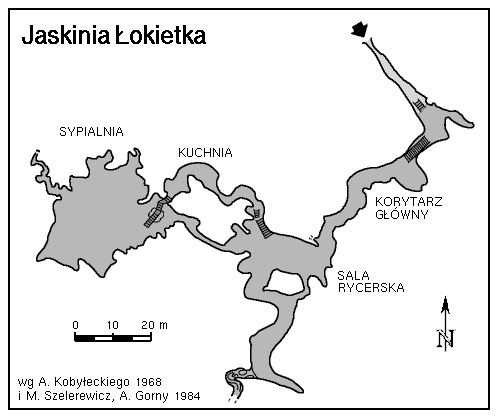
Cave of King Łokietek in the Ojców National Park
The cave is associated with a legend about King Władysław Łokietek, who hid in it for about six weeks after having escaped from Kraków from the troops of the Czech king Wenceslas II. His life was saved by a spider, which spun a web covering the opening of the cave and thus confusing the chase. This story is immortalised in the name of the cave and its individual chambers, as well as in the wrought-iron gate shaped like a spider’s web at the entrance.
A narrow 20 m long crevasse leads to the entrance (it is the remainder of a corridor whose ceiling collapsed). The Main Corridor leads to the 25×10 m Knight’s Room. The largest room of the cave is known as the Bedroom, with dimensions of 20×30 m. The combined length of the corridors and chambers is approximately 270 m and the temperature is 7-8°C. In 1927, it was declared a historic monument. Łokietek’s Cave has been adapted to accommodate large groups of tourists. Since 1987, it has been fitted with wooden stairs and electric lighting. It is visited by more than 90 thousand people every year.
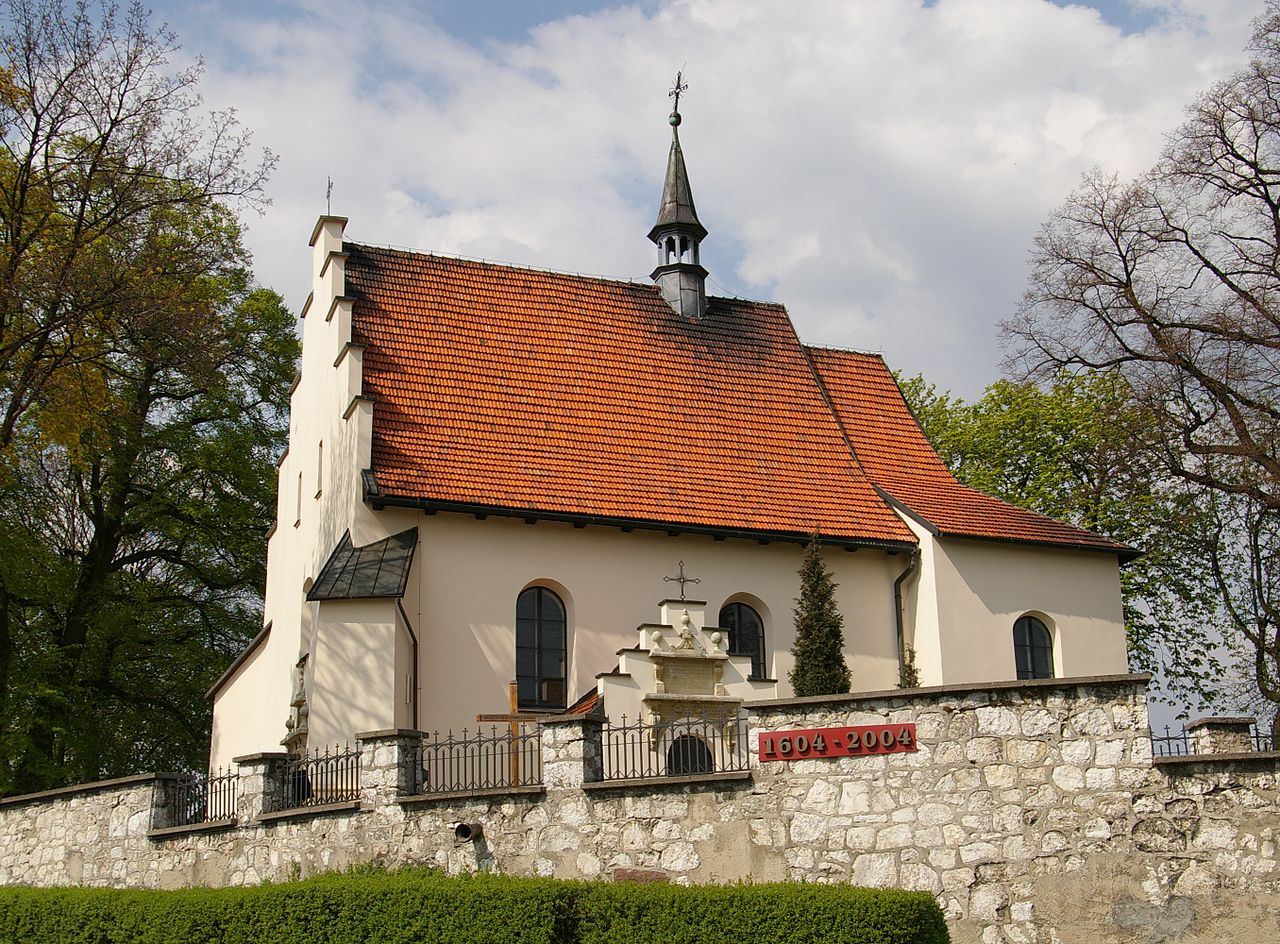
16th century Church of St. Giles in Giebułtów
The oriented stone building featuring buttresses has a presbytery with a semi-circular apse. A chapel with a rib vaulting was added to the presbytery. On the south side, there is a porch built in mid-19th century.
The previous church was founded by Judyta, the wife of king Władysław Herman. The current building was erected between 1601 and 1604, adapting the previous construction, as evidenced by its irregular plan. The founders were Jakub Tomaszewski, Bończa coat-of-arms, and Barbara Pisarska, Szreniawa coat-of-arms, or Kacper Giebułtowski. In 1604, the church was consecrated by bishop Bernard Maciejowski.
Interesting historic artifacts:
- on the southern façade, the Mannerist portal bears the foundation table with information about the consecration in 1604;
- a portal with Renaissance dressings;
- Gothic tomb slab with carved depictions of Stanisław Oraczowski and his wife Barbara;
- main altar with a 1623 copy of the image of Our Lady of Częstochowa;
- marble baptismal font from 1666;
- monstrance from mid-17th century;
- Renaissance pax from the beginning of the 17th century.
- pacyfikał renesansowy z początku XVII wieku.
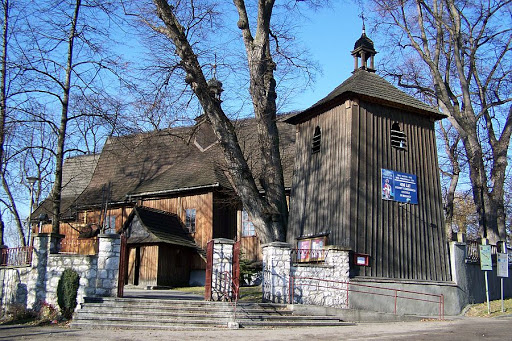
16th century Church of St. Adalbert and Our Lady of Sorrows in Modlnica
The oriented wooden church was built in 1553 and consecrated in 1555. Is is standing in the place of a former church, probably erected in the middle of the 12th century, thanks to the parish priest, Fr. Jakub Pontificjusz and the administrator of the Zabierzów estate, Jakub Śladkowski. Initially the building was built on a cross plan, but in 1622 the northern shoulder (and the sacristy) was turned into a masonry Renaissance tomb chapel of the Kucharski family. The vestibule was expanded between 1878 and 1879, enlarging the church from the western side.
The church is a log wall building with vertical boarding and shingle roofing. By the nave, there is a Baroque polygonal steeple with a lantern. The interior features a Renaissance polychrome painting from 1562 and from the mid-17th century. The church altars were made in the 17th century. The church has coffered ceilings.
Interesting historic artifacts:
- Gothic painting of our Lady of Modlnica with Child from 1460-1470 in the main altar;
- tabernacle shaped like a small shrine made between 1533 and 1536 by the Renaissance sculptor Giovanni Maria Padovano of red Hungarian marble;
- baptismal font made from black Dębnik “marble”;
- 17th century pulpit;
- epitaph of Stanisław Kucharski (d. 1619).
Next to the church there is an 18th-century wooden belfry with a post frame construction and bells made in 1498 and 1542.
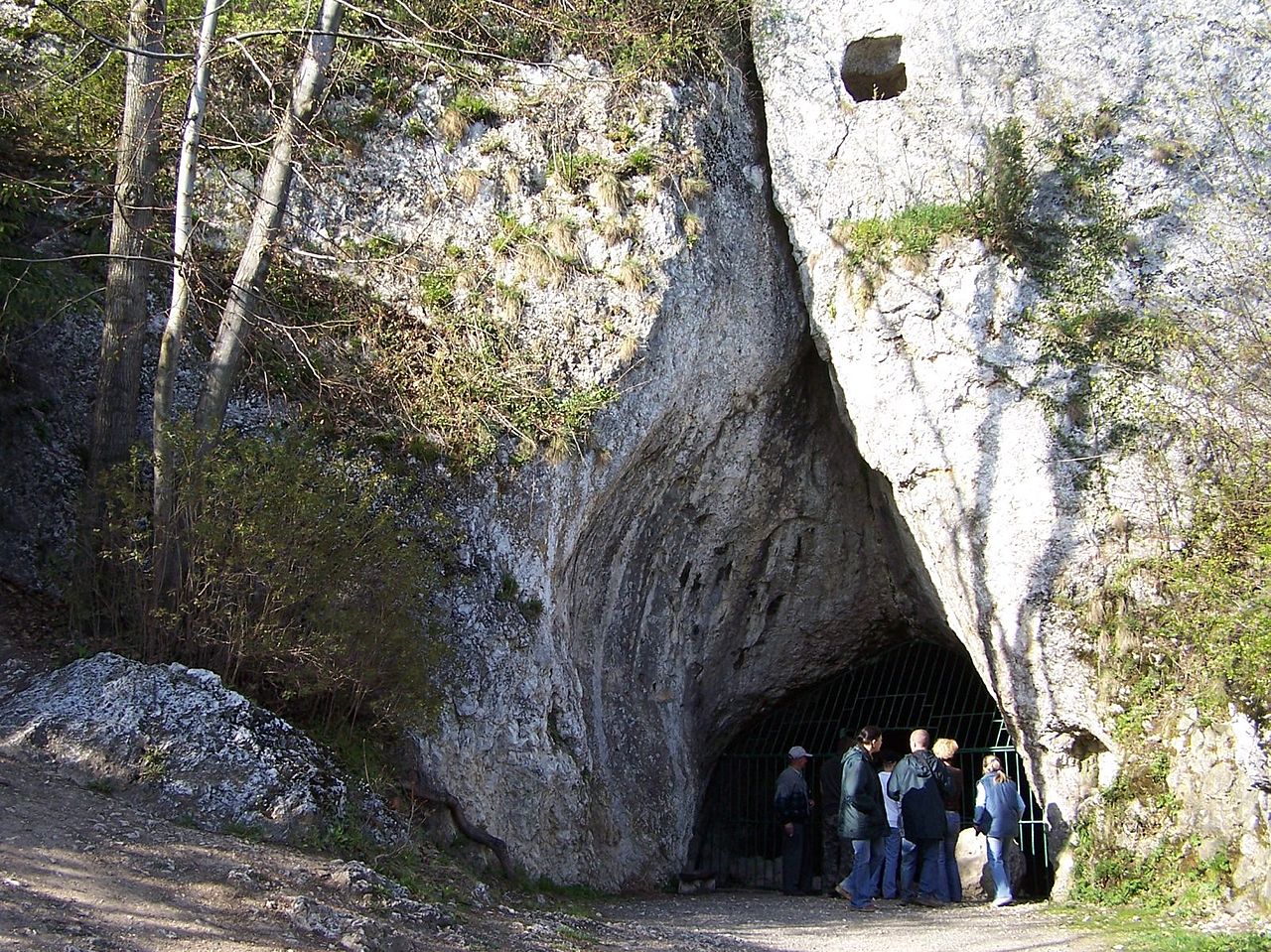
Nietoperzowa Cave
Its first written mentions come from the first half of the 19th century. As many as 4,000 cave bear canine teeth were found there between 1872 and 1879. The first exploratory expedition took place in 1871, led by Jan Zawisza, the owner of the Prądnik Valley. It yielded numerous archaeological findings and animal bones.
From the point of view of archaeology, the Nietoperzowa Cave is known as an Upper Palaeolithic site dating back 38,000 years ago. It served as a camp for cave bear hunters. The hunters from the Jerzmanowice area, who were already homo sapiens, left behind flint arrowheads.
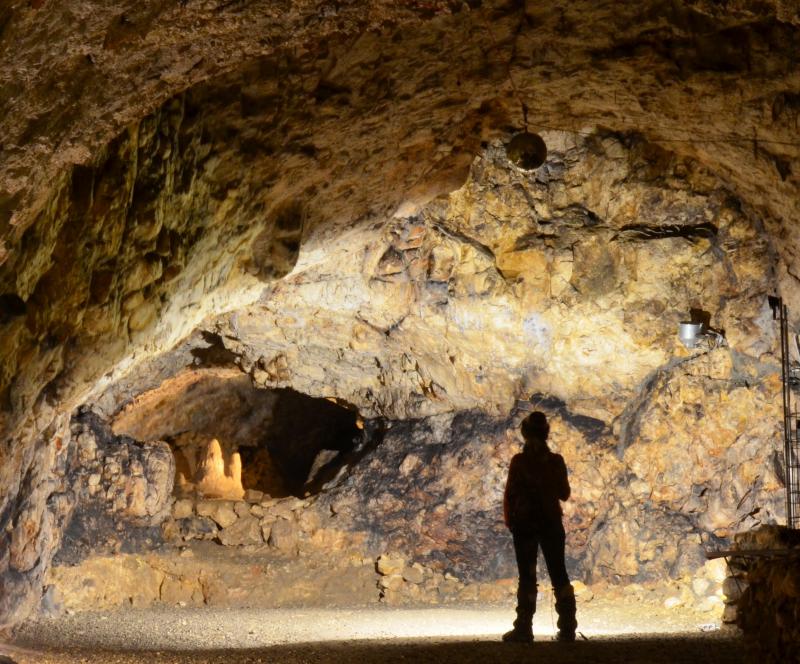
Wierzchosławska Cave
The total length is 975 m and the air temperature is approx. 7.8°C. Hala Wielka Dolna, or the Great Lower Room, is one of the largest in the whole Jurassic Upland.
The first mention of the cave comes from 1853. Research in the second half of the 19th century confirmed the existence of intensive settlement in the region already in the Neolithic era (about 7,000 years ago). Archaeologists found fragments of vessels and tools as well as traces of fireplaces. The cave is interesting from the point of view of palaeontology. The alluvial deposits revealed, among others, bones of cave bears, hyenas and other animals who lived this area in the glacial period. In the 19th century, tourism saw a rapid growth. More and more visitors would arrive in Ojców for the waters, and some of them were eager to see the already well-known Wierzchowska Cave, which had been was one of the first caves in Europe to handle tourism, with lighting using Chinese lanterns and prepared guides.

Hermitage of Bl. Salomea from the 13th century
Prince Bolesław the Shy, who reigned over the Krakow district since 1243, founded a defence castle in Grodzisko, fortified with a moat and ramparts, as well as a monastery and a Romanesque church. In 1260, the prince gave Grodzisko together with the adjacent villages to his sister, Salomea, who, after the death of her husband Kálmán, king of Halych, had joined the Poor Clares in 1245. Thus Salomea, along with a group of fellow nuns, moved from Zawichost to a newly created castle.
In the 13th century, many armed skirmishes took place near the monastery, and the castle turned out to insufficiently safe, so at the beginning of the 14th century, the Poor Clares asked king Władysław Lokietek for a transfer to another place. In the 15th century, the monastery in Grodzisko was abandonded and over more than two centuries it fell completely into ruin. In the 17th century, the Poor Clares once again were interested in their former home, mainly due to the ongoing process of Salomea’s beatification. In place of the old monastery, they erected a cross, and in 1642 the chapel of the Assumption of the BVM. In 1677, Fr. Sebastian Piskorski, professor of the Kraków Academy and a canon from Kraków, was appointed the prebendary of Grodzisko. Between 1677 and 1691, he built a Mannerist complex of architecture and sculpture, commonly referred to as the hermitage of the Blessed Salomea. It consisted of an hermitage, prayer houses, a church and the house of the prebendary, forming the shape of the letter L. This layout has survived to the present times.
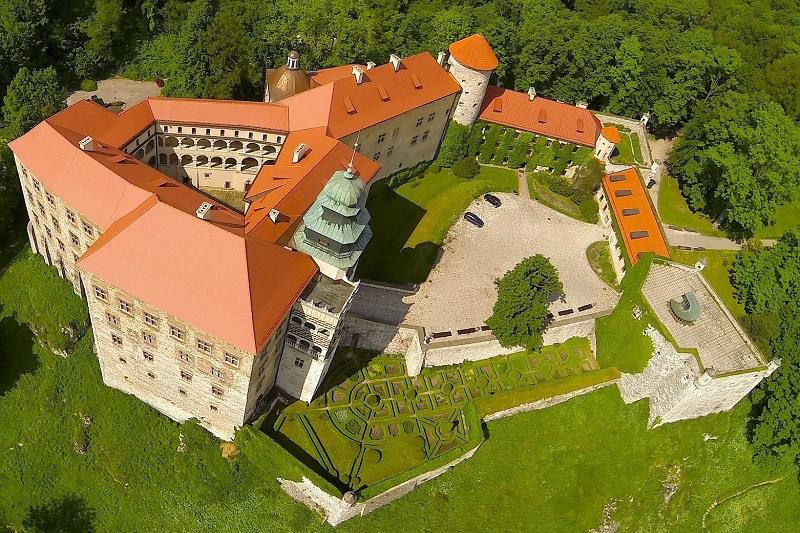
Pieskowa Skała Castle – Wawel Royal Castle Museum Branch
The castle was mentioned for the first time as Peskenstein in a document issued in 1315 by King Władysław Łokietek. In the first half of the 14th century, Kazimierz the Great built a castle consisting of two parts: upper and lower. It was part of the chain of fortifications which went down in history under the name “Eagles’ Nests”. The upper part, which did not survive to our times, was perched on an inaccessible rock called “Dorotka”.
Between 1377 and 1608, the castle was the seat of the Szafraniec family, whose well-known representative was the Kraków Voivode Piotr Szafraniec. Some later representatives of the family made their living as highwaymen, using the castle as their base for attacks on merchants passing through the Prądnik Valley on the road between Kraków and Silesia. As a result, Krzysztof Szafraniec, the grandson of the first owner, was beheaded on the Wawel Hill in 1484.
Between 1542 and 1580, the Gothic castle was transformed into a Renaissance residence. In the 17th century, a bastion fortification system was added during the times of Michał Zebrzydowski. During the Swedish Deluge (1655), the castle sustained severe damage, and suffered in a fire in 1718. It was rebuilt as a seat of the Wielopolski family in 1768. In 1787, they hosted King Stanisław August Poniatowski.


















